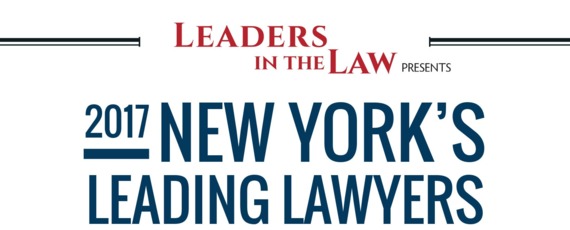
Injured construction workers often mistakenly assume that they could only recover workers’ compensation benefits f they suffer injuries in a work-related accident. However, if their injuries are caused by a third party’s negligence, they may also be entitled to recover additional damages. From that party and the owner and general contractor on the job.
Further, visitors and guests who are hurt at construction sites can also recover compensation, including damages for lost wages and reductions in future earnings, out-of-pocket expenses, costs of physical and occupational therapy, future medical expenses, and damages for pain and suffering. There are different laws applied to visitors than those that protect workers.
At Friedman, Levy, Goldfarb, Green & Bagley, P.C., we have represented injured construction workers and site visitors for over 50 years. We fight to collect the full measure of their damages in all of the counties in New York. A knowledgeable and experienced personal injury lawyer from our firm can help you understand the compensation that may be available to you in your construction accident case.
What compensation is available to an injured construction worker?
An injured construction worker’s ability to collect workers’ compensation benefits generally requires the employee to notify their employer about an injury and promptly file a claim. If it is approved, workers’ compensation will reimburse at least a portion of the employee’s lost wages and medical expenses to treat work-related injuries.
If the injuries were the direct result of the negligence of a party other than their employer, they could also file a lawsuit to claim additional damages, including:
- the value of reductions in prospective future earnings due to disabilities or lengthy rehabilitation
- out-of-pocket expenses for items such as transportation to medical appointments and equipment for physical therapy
- anticipated or prospective medical costs and expenses associated with an injury
- compensation for pain and suffering, loss of enjoyment of life and the company of friends and family members, and loss of consortium.
However, if an injured employee has received workers’ compensation benefits, they will not be able to recover duplicate benefits in a negligence lawsuit. In every case, injured construction workers should consult directly with a construction accident attorney for an estimate of the total damages that may be available.
What compensation is available to an injured construction site visitor?
The same premises liability standards that private property owners follow apply equally to construction site owners and managers. There may be more apparent hazards and risks at a construction site that a visitor must take care to avoid. However, the owner remains obligated to remove or protect against known and hidden hazards that can lead to a visitor’s injury. Those hazards include:
- unsecured or improperly stored tools or materials that fall and injure unsuspecting visitors
- trips and falls over improperly marked holes or ditches
- walkways that unnecessarily take visitors over access roads used by heavy equipment
- failure to provide hard hats or other safety equipment.
In every construction accident lawsuit in New York, an injured visitor will need to show that the negligent party owed a duty of care that was not followed. In addition, that breach of duty caused the visitor’s injuries. An experienced NYC construction accident lawyer will use the facts and details of the accident and the visitor’s injuries to demonstrate this chain of causality and their right to recover damages for their injuries.
What factors affect settlement value in a construction accident case?
Multiple factors will affect the settlement value of your construction accident lawsuit, including the skill and tenacity of your attorney. Typically, the settlement amount will be the sum of an injured party’s economic and non-economic damages. Economic damages are costs and expenses that have an objective value that can be shown with bills and invoices, such as:
- Costs of medical care from doctors, hospitals, prescription drugs, medical devices, and rehabilitation therapy.
- Lost wages, as shown by pay stubs and similar proof of salary.
- Where construction injuries lead to a fatality, costs and expenses of a funeral and internment.
- Anticipated future costs and expenses associated with medical care and lost wages.
- Occupational therapy costs associated with training to perform a new job if injuries preclude an accident victim from going back to his or her prior employment.
The factors that are considered when calculating non-economic damages include:
- The pain, suffering, and mental anguish experienced by a construction accident victim.
- Temporary or permanent scarring, disfigurement, or loss of a limb or body function.
- The adverse effects of a construction worker’s injuries on his or her relationships with family and friends, and the worker’s general reduction in the enjoyment of life.
To demonstrate these and other non-economic losses, an attorney might elicit testimony from family and friends and use other evidence to show the contrast between a plaintiff’s lifestyle before and after the accident.
Typically, a negligent party in a construction accident case will try to claim that the injured party’s own negligence was a significant factor in causing his or her injuries. When faced with this argument, the plaintiff’s lawyer will use expert testimony and other evidence to refute these claims. However, because New York is a “comparative negligence” state, a plaintiff here can still collect damages even if they were partially responsible for the incident that caused their injury.
Contact us for a free consultation
At Friedman, Levy, Goldfarb & Green in Manhattan, we have an in-depth understanding of the dynamics of construction sites and of the multiple parties that typically work at those sites. We drill down into the essence of every case to identify the liable parties and work hard to recover the largest available damages award for every one of our clients. We work on a contingency-fee-basis, so there are no upfront legal costs.






